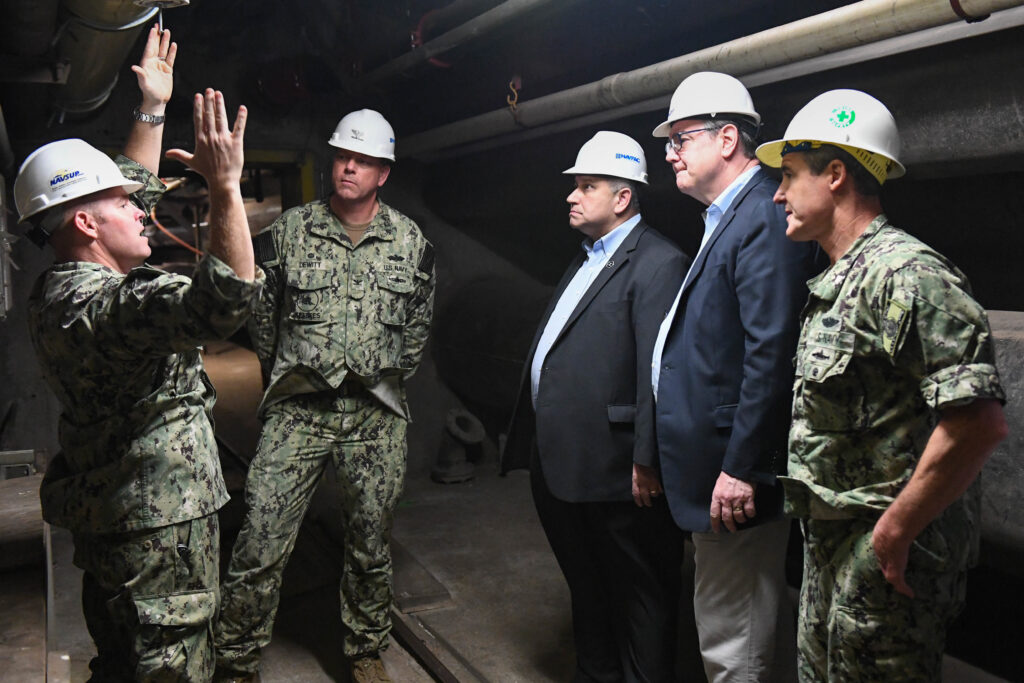
WASHINGTON — The commander of U.S. forces in the Indo-Pacific region addressed concerns from Congress about the impact of the closure of the Red Hill fuel depot in Hawaii during March 9 testimony on Capitol Hill.
Rep. Mike Rogers, ranking member of the House Armed Services Committee, said in his opening remarks that Navy Secretary Carlos Del Toro’s decision to close Red Hill was made “without laying out the resources to replace that capacity. That’s extremely short-sighted. The response from the department has been the same: the answer is just one policy announcement away. And that’s unacceptable.”
Rogers told Adm. John C. Aquilino, commander, U.S. Indo-Pacific Command, that “he wanted to hear how Indo-Pacific Command will implement new operational concepts and new systems to ensure that logistics support at new operating locations throughout the Indo-Pacific.
“But most importantly, I want to know how you intend to do that in the next five years,” Rogers said. “We all know China is not going to give us 10 to 20 years to prepare for conflict. We simply cannot procrastinate any further. The issue like Red Hill presents an opportunity to modernize beyond the World War II logistics model. But I’m deeply worried about the cycle of indecision and procrastination at the Pentagon.”
Aquilino said that as senior leadership looked at options with regard to Red Hill, three criteria had to be met: clean water for the people of Hawaii, service members and their families; meeting the war plan and warfighting requirements; and cost.
“We developed a plan that actually goes in alignment with a more distributed plan — both forward- and land-based — combined with a sea-based component to allow for a more distributed, survivable, resilient network of fuels, as well as meeting all of the security and the strategic fuel reserve requirements,” the admiral said. “I actually think that we’re going to be in a better place, and we meet all three requirements.”
Aquilino said the Department of Defense, the Environmental Protection Agency and the Hawaii Department of Health are working together toward a solution.
“We will go as fast as safe allows,” he said. “We have to make sure the facility is safe, to transfer that fuel into places that we’re going to end it, but we’re certainly not waiting. As soon as we can get it done, we’ll be ready to move, and as soon as we’re able to contract some of those other facilities, as well as the sea-based option.”
The Defense Department had announced the Red Hill facility would be closed within the year.
“That just allows us to be able to distribute that fuel with the contract requirements, the sea-based requirements, and the need to put it in the correct spots,” Aquilino said.
- SECNAV Advocates Increased Legal Immigration to Increase Shipbuilder Workforce - April 23, 2024
- Insitu Going Strong at 30, Focusing on Maritime Operations - April 8, 2024
- Navy Awards Boeing Additional Funds for MQ-25 Drones for Testing - April 3, 2024






